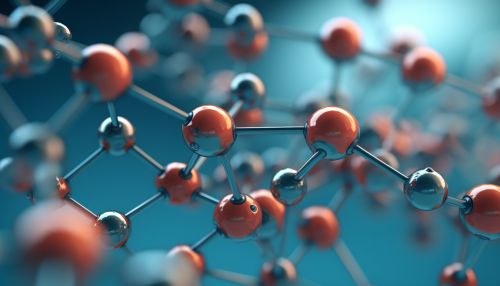Oxidation state
Introduction
The Oxidation state, also known as oxidation number, is a concept in chemistry that describes the degree of oxidation (loss of electrons) of an atom in a chemical compound. Conceptually, the oxidation state can be understood as the hypothetical charge that an atom would have if all bonds to atoms of different elements were 100% ionic.
Definition
The oxidation state of an atom is not necessarily equal to the charge of the atom. Instead, it represents the number of electrons that an atom uses in forming chemical bonds with other atoms. The oxidation state is represented by integers, which can be positive, negative, or zero.
Determination of Oxidation States
The oxidation state of an atom in a molecule can be determined by following a set of rules, often referred to as the "Oxidation State Rules". These rules are based on the arrangement of electrons in an atom and the electronegativity of the elements involved.
Oxidation State Rules
The rules for assigning oxidation states are as follows:
1. The oxidation state of an atom in its elemental state is zero. For example, the oxidation state of nitrogen in N2, oxygen in O2, and sulfur in S8 is zero.
2. The oxidation state of a monatomic ion is equal to its charge. For example, the oxidation state of Na+ is +1, Cl- is -1, and Fe3+ is +3.
3. Oxygen usually has an oxidation state of -2 in its compounds. Exceptions include peroxides (where it is -1) and compounds with fluorine (where it is positive).
4. Hydrogen has an oxidation state of +1 in its compounds with nonmetals and -1 in its compounds with metals.
5. The sum of the oxidation states of all atoms in a neutral compound is zero. In a polyatomic ion, the sum of the oxidation states is equal to the charge of the ion.
6. In compounds, the elements of groups 1 and 2 have oxidation states of +1 and +2, respectively.
7. In compounds, the elements of group 17 (the halogens) have an oxidation state of -1, except when they are combined with an element of higher electronegativity.
Oxidation and Reduction
In chemical reactions, the change in oxidation state of atoms, ions, or molecules is used to identify the type of reaction taking place. If the oxidation state of an atom increases during a reaction, it is said to have been oxidized. If the oxidation state decreases, the atom is said to have been reduced. These reactions are collectively referred to as redox reactions.
Oxidation State and Electronegativity
The concept of oxidation state is intimately linked to the property of electronegativity. In a chemical bond between two atoms of different electronegativities, the more electronegative atom will tend to attract the shared electrons in the bond more strongly. This results in a partial negative charge on the more electronegative atom and a partial positive charge on the less electronegative atom. The difference in electronegativity between the two atoms determines the degree of ionic character of the bond, and thus the oxidation states of the atoms.
Applications of Oxidation State
The concept of oxidation state is used extensively in chemistry. It is used to balance chemical equations, especially redox reactions. It is also used to predict the products of certain types of reactions, and to understand the properties of chemical compounds.


